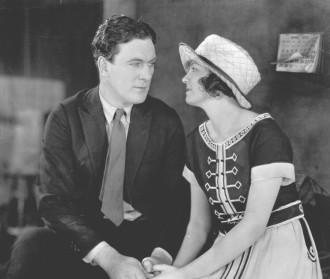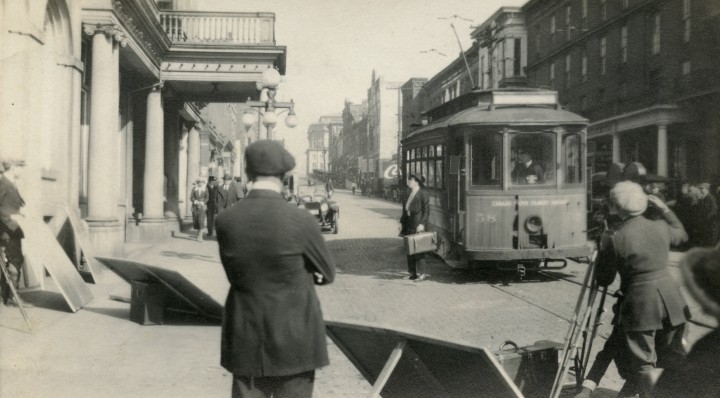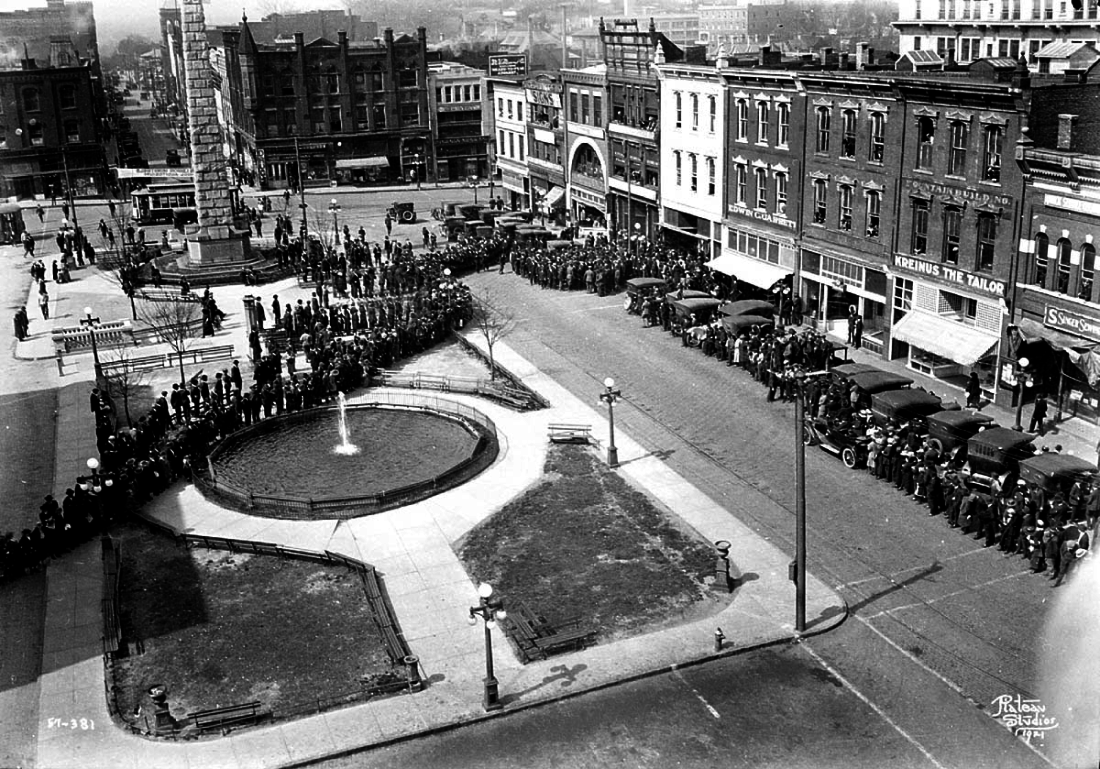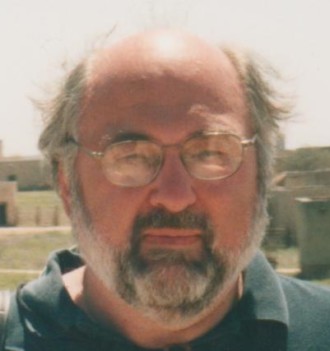Local movie expert Frank Thompson has resurrected a largely forgotten but important piece of Asheville history in his latest book, Asheville Movies, Volume 1: The Silent Era.
“It’s definitely a subject that literally nobody has ever written about,” says Thompson.
But Thompson’s book reveals a real tragedy – almost all of the dozens of movies shot in and around Asheville have vanished.
“The book is a heartbreaker in many ways because out of more than 60 films made here between 1900 and 1929, only one survives [intact],” Thompson adds. “And every one of the lost films — every single one of them — contained priceless and irreplaceable images of the time and place in which they were made. If we could see them all, I truly believe it would alter the way we look at the history of Asheville.”
Thompson’s book uncovers a bygone cinematic history and, in so doing, provides new views and insights about Asheville. Divided into seven chapters, Asheville Movies, Volume 1: The Silent Era takes the reader on an enlightening journey that “rediscovers a forgotten era of filmmaking in the Land of the Sky from the earliest ‘actualities’ in 1900 to the final silent film, We’re Careful Now,” according to the book’s back cover description.
Thompson sheds light on when and how film companies such as Edison made their way to Asheville, as well as what and where silent films were made and who starred in them and why. The filmographies of Captain Bob, Summer Girls, The Conquest of Canaan and more are displayed following Thompson’s narration into the backstory behind how Asheville became such a popular and lucrative movie site. Stars such as Clara Kimball Young, Alice Brady, Edward Warren and more traveled to film in Asheville, where the mountains themselves served not only as a draw but as a star in themselves. Thompson keeps the reader engaged by making the information feel like a reward and not a lesson, often incorporating local trivia of the time.
For instance, when discussing The Conquest of Canaan‘s film history, Thompson recounts: “In the ‘School Calendar of 1920-21’ section of Asheville High School’s 1921 yearbook, the month of March was marked with a single entry: ‘Thomas Meighan is in town!’ It wasn’t only the teenagers of Asheville who were thrilled by the visit from Hollywood royalty. The entire city was electric with excitement for nearly a month while Famous Players-Lasky filmed its adaptation of Booth Tarkington’s The Conquest of Canaan.”
So what drove Thompson to be a voice for Asheville’s unheard silent era?
In addition to his long-standing love of movie history, Thompson has an affinity for location-themed books. When he moved to Asheville two years ago, he began looking into what silent films had been made in here. Initially, Conquest of Canaan was the only one he discovered. Released in 1921, Conquest is often listed as being the first silent film ever made in Asheville. But after doing some digging, Thompson discovered Conquest was actually the 51st. That’s when he realized he had a story. But how would he find the 50 other “works” to tell his tale?
“In terms of research with this book, I had to blast out a stone, because nobody had done any legwork,” he says.

Knowing that Conquest of Canaan was the only Paramount film made in Asheville during the silent era, Thompson began his research by going through the Paramount collection at the Margaret Herrick Library of Motion Picture Arts and Sciences in Beverly Hills, Calif.
“The only way to write a book like this is to put boots on the ground and go to where the information is,” he says.
His search took him to many archives, libraries and historical societies. But Thompson says his key guide was a book by Jenny Henderson called The North Carolina Filmography, which lists all the films made in Asheville. Armed with this information, he dug deeper to find the early films’ histories, as well as photos of the productions. The photos were difficult to find, Thompson discovered. He looked in trade magazines as well as a variety of publications from the moving picture world, starting with 1912, digitizing what he found and enhancing them to make them look as good as possible, despite the fact that many images he found had survived only on microfilm.
Six silent films made in Asheville from 1916-29 were cast locally. Even though they were sponsored in part by local newspapers, no one kept an archive of production-related photos.
“It’s just a tragedy to me that they didn’t keep any of those pictures because it’s all history,” Thompson laments.
Thompson’s book includes 113 stills, including film scenes, location sites (Asheville City Hall, Pack Square and Grove Park Inn among them), action shots and movie posters, all of which help transport the reader onto the movie sets of the past and provide views of Asheville a century ago. Thompson’s dedication to adding depth to an unexamined subject makes the images and the stories behind them all the more impactful. He serves as the reader’s guide through a virtual museum full of information and wonder. When it comes to silent films, who knew Asheville was a secret Hollywood?
Thompson’s writing style not only enlightens but inspires, by breathing life into facts that have been mostly forgotten until now. For example, Thompson details the history behind The Warfare of the Flesh, an allegorical drama by Edward Warren Productions, which was one of the company’s two films made in Asheville: “Except for The Conquest of Canaan (1921), The Warfare of the Flesh is the only silent film made in Asheville that survives. At least some of it does. The film is in the collection of the EYE Film Museum in Amsterdam. The bad news is that this print is missing the biblical prologue, which was shot in Florida (the Garden of Eden) and North Carolina (hell). The modern story, filmed in New York City, is all that exists today. But to make things even more confusing, a few minutes of the film survive elsewhere. Badly deteriorating footage of the Garden of Eden sequence can be seen in the film Lyrisch Niraat [Lyrical Nitrate] (1991). The existence of this footage, barely watchable though it is because of nitrate decomposition, inspires optimism that another print exists elsewhere and perhaps some of that hellish Swannanoa-shot footage survives.”
Thompson’s goal is to give recognition to a silent art that he feels more than earned the right to be remembered.
“As it is, the best I could do is dig deep for information about [these silent movies] and make the reader aware that they once existed,” Thompson says. “We can get some sense of the films from the synopses and surviving pictures. But the films themselves would be revelatory. Certainly, our one surviving Asheville silent is — watching Conquest is like time-traveling to an Asheville that no longer exists.”
Thompson will be on hand to read from Asheville Movies, Volume 1: The Silent Era and sign copies at Battery Park Book Exchange at 2 p.m. on Saturday, June 17. Thompson’s book is currently being sold in three Asheville locations: The Grail Moviehouse, The Battery Park Book Exchange and Malaprop’s. It can also be ordered online at menwithwingspress.com. An article about the filming of The Conquest of Canaan can be read here.







Hey, I’m a little late on this one because I moved away from Asheville. A friend mentioned an author writing a book on silent film in Asheville so I looked it up. It is interesting to see the ‘author’ say “It’s definitely a subject that literally nobody has ever written about.”
I did. I wrote my senior thesis at UNCA on it and published it more than ten years before this book. It is odd to hear the elaborate measures this guy supposedly went to to find information I had already collected and written about. I wouldn’t think such an experienced researcher could miss a paper on his exact subject cataloged at the only university in town.